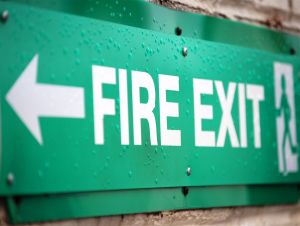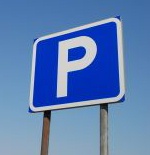Editor’s Note: I was sent a preview copy of Dave Crenshaw’s upcoming book, and it really grabbed me. In this world where work is often referred to as “the grind,” it’s refreshing to consider the importance of having fun. My key takeaway from reading the book was to work within my natural rhythms, and support them, rather than fighting and trying to become a “morning person.” I’ve found that building in fun breaks injects excitement into the day. (My secret oasis fun is playing loud music from a special playlist. I’d love to hear your ideas in the comments.) Dave was kind enough to write a guest post for us, so please enjoy!
by Dave Crenshaw
Think about the old Hollywood movies depicting a barren desert landscape. Our noble hero marches inch by inch through this lifeless plain, hallucinating and dehydrated. It’s drawn out and agonizing. But just when you think “all is lost” or “I’ll just fast forward this part,” they stumble upon a beautiful, serene oasis in the middle of nowhere. It’s usually just a mirage, yet, somehow, it resonates.
These desert scenes are a metaphor for how life can become. We may struggle with a personal or entrepreneurial desert. The key to coming out of that desert is discovering our “oasis.” By “oasis,” I’m referring to meaningful, fun breaks that you consciously merge into your work day. These breaks refresh and rejuvenate your body and spirit.
The Oasis Concept at Work
The Work Oasis is how you go about taking little, fun breaks during your normal work schedule.
Whether you work in a multinational behemoth with tens of thousands of employees or you’re at a small start-up, the Work Oasis is vital to your productivity.
Most often, these are micro-oases (the plural of “oasis,” seriously!) that occur for 10-30 minutes multiple times each workday. This may be out-of- line with company culture, but for you to be more successful, it is important that you take the initiative to take these breaks.
A study by Harvard Business Review and The Energy Project found that employees that took at least three short, daily breaks were 81 percent more likely to stay with a company, and 78 percent of employees reported an increased sense of wellness. Quite simply—when you take fun breaks at work, you improve your productivity and well-being, and that makes a better life.
When Should I Take an Oasis?
You may have heard of the circadian rhythm or “body clock”. This is the 24-hour oscillation of energy your body goes through in a 24-hour period. Well, in a workplace context, you have an optimal cycle for taking breaks as well. Nathaniel Kleitman, a sleep researcher, discovered the “basic rest-activity cycle”—also called the ultradian rhythm.
Ultradian rhythms are shorter, recurrent patterns in our circadian day. Each person has an optimal cycle for how long they can work before needing a break. Similar to how each person has unique nightly sleep needs, a person’s work break needs to occur every 90 to 120 minutes. You can get to the point of diminishing returns where your work suffers if you don’t take a break. You just stop being as productive. Makes sense, right?
Experiment taking breaks between 90-120 minutes to determine what makes you feel most rejuvenated when returning. Once you discover your ultradian rhythm, you can build a schedule that supports it.
Discover Your Fun
You’ve got the rhythm, now it is time to figure out what you will do on the break. Think way back to when you were a kid. What did you do for fun? Did you like to play video games or play outside? Did you color or watch TV? These activities―however silly they may seem―are at the essence of who we are and how we like to have fun.
Now think about the adult equivalent of that activity. Maybe you take a stroll outside, watch YouTube videos, or play a game on your phone. I’m not telling you to be childish. I’m championing being childlike!
Come up with a list of activities you could do within 10-30 minutes and keep them close by to reference when you take an oasis.
It’s time to restore recess to our routine. Try the experiment and measure your results.
Once you implement your Work Oasis, you’ll likely notice than having more fun helps you get more done.
_______________
AUTHOR BIO:
Dave Crenshaw is the master of building productive leaders and has transformed hundreds of thousands of business leaders worldwide. He has appeared in TIME magazine, USA Today, Fast
Company, and the BBC News. His courses on LinkedIn Learning have received millions of views. He has written three books and counting, including The Myth of Multitasking which was published in six languages and is a time-management bestseller. His fourth book, The Power of Having Fun, releases September 19th. Learn more about Dave at DaveCrenshaw.com.



